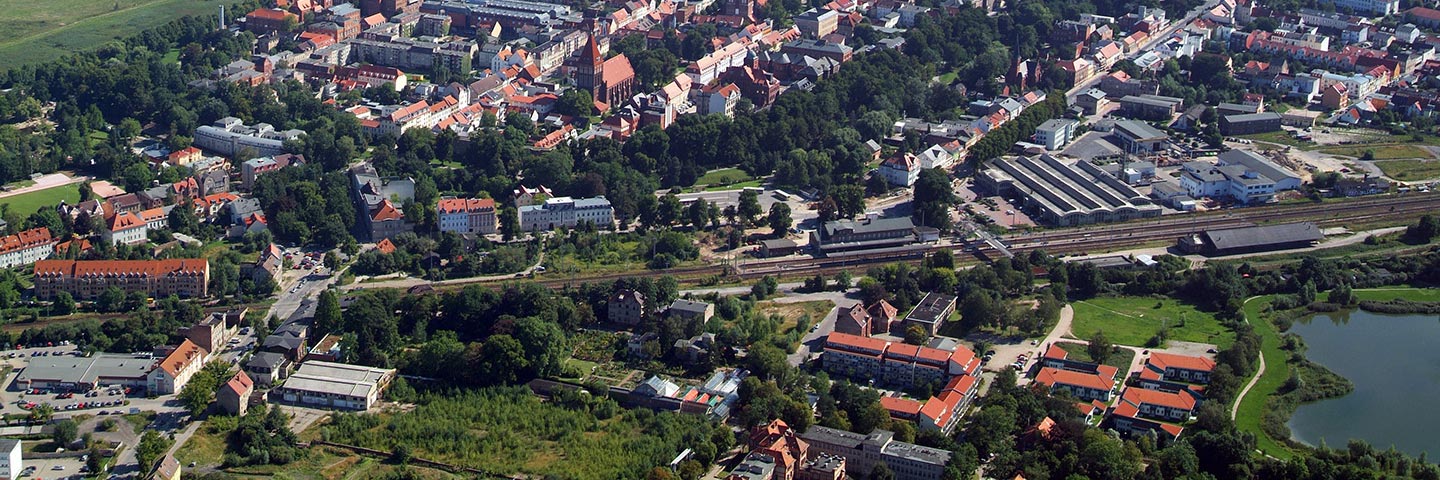History
Greifswald – more than two centuries expertise on millennia of peatland history
Since more than 200 years Greifswald has hosted interdisciplinary landscape-oriented research and education providing important impulses to policy and society. Mires and peatlands were and still are a major research focus.
| 1456 | The University of Greifswald is founded. From 1637 to 1815 Greifswald was under Swedish sovereignty and can be thus regarded as ‘oldest Swedish university’. |
| 1769 | First professor of Botany. |
| 1788 | Johann Quistorp was appointed as interdisciplinary professor for natural history and economics. |
| 1820 | Christian Friedrich Hornschuch establishes peatland science in Greifswald with the series “On the pecularities of the peatland flora in the vicinity of Greifswald“ (German: „Über die Eigenthümlichkeiten der Flora der Torfmoore in der Umgegend von Greifswald“, 1837) and the publication of “Bryologia Germanica” (1823-1831). |
| 1824 | Adelbert von Chamisso‘s study “Investigations of a peatland near Greifswald” (German: „Untersuchung eines Torfmoors bei Greifswald“) initiates palaeoecological peatland research and identifies sea level changes and peatland regeneration. |
| 1853 | Carl August Trommer publishes “Soil assessment by means of wild plants” (German: „Die Bonitirung des Bodens vermittelst wildwachsender Pflanzen“) – a botanical indicator system for site conditions. |
| 1927 | Designation of the Kieshofer Moor as a protected area on the initiative of the Professor of Botany Erich Leick. His research substantially contributed to a better understanding of what is nowadays called ecosystem services of peatlands. |
| 1928 | Kurd von Bülow publishes the first pollen diagram for Northeast Germany in “Pollen analysis of the Kieshofer Moor near Greifswald” (German: „Pollenanalytischer Beitrag zur Kenntnis des Kieshofer Moores bei Greifswald“). From 1929, the series “Handbook of Peatland Science” (German: „Handbuch der Moorkunde”) is published. |
| 1935 | Erich Leick establishes the Institute of Plant Ecology – the first of its kind in Germany. |
| 1953 | Werner Rothmaler writes, in Greifswald, the “Rothmaler” – the best flora identification key available in the German-speaking countries. |
| 1963 | Franz Fukarek refines Geobotany, Plant Geography, Floristics and Palynology. |
| 1992 | Michael Succow becomes Professor of Geobotany and Landscape Ecology in Greifswald. In 1997, he is awarded the Right Livelihood Award. |
| 1996 | Establishment of the working group ‘Peatland Studies and Palaeoecology’. |
| 1999 | Establishment of the Michael Succow Foundation and of DUENE e.V. Both organisations have a focus on mires. |
| 2000 | Hans Joosten becomes Secretary-General of the International Mire Conservation Group (IMCG). The IMCG secretariat is located at the University of Greifswald. |
| 2001 | New edition of the standard text book „Landschaftsökologische Moorkunde“ (Succow & Joosten 2001). |
| 2007 | Start of the international Master’s degree course ‘Landscape Ecology and Nature Conservation’ offering specialisation in Mire Ecology. |
| 2008 | Martin Wilmking (successor of Prof. Succow) expands the institute’s profile to the fields of ecosystem dynamics and forest ecology. Hans Joosten is appointed as Extraordinary Professor in Peatland Studies and Palaeoecology to strengthen peatland-related education and research in Greifswald. |
| 2014 | 'Environmental Change: Responses and Adaptations' is established as the fifth research priority of Greifswald University |
| 2015 | Founding of the Greifswald Mire Centre |








